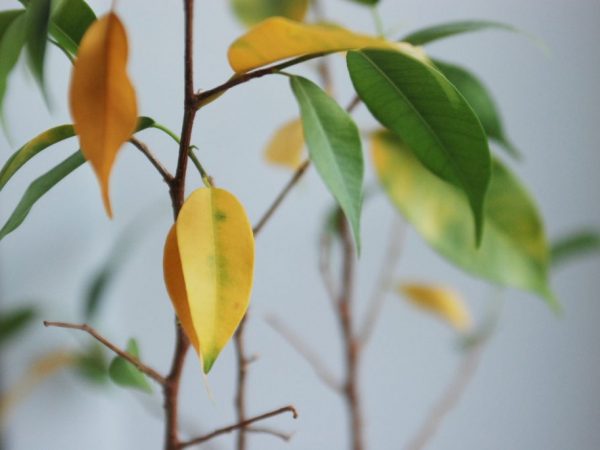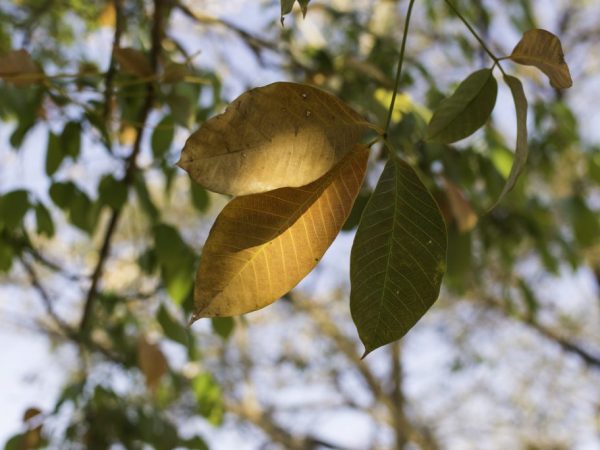How to get rid of yellowing of ficus leaves
Ficus is one of the most attractive ornamental plants. For this reason, the bush is especially appreciated by designers. However, the ficus leaves may begin to lose color. There are many reasons why ficus leaves turn yellow. Depending on the symptomatology, the tree must be properly cared for.

How to get rid of yellowing of ficus leaves
Ficus has been used as an indoor flower for a long time. This plant has many medicinal properties and is surrounded by positive superstitions. In addition, due to the structure, the stems of the tree can be beautifully intertwined, and the crowns can be cut in the form of a geometric figure.
Causes of yellowing
Any indoor bush needs the right conditions for keeping. The most common reason why the leaves of the ficus turn yellow and fall off is the violation of the sanitary standards for keeping the plant.
However, if the trunk is infected with mold, cobwebs, or other stains, the flower is infected with fungus or pests. In this case, the ficus needs special treatment, and preventive measures will help to reduce the risk of the appearance of harmful organisms.
Improper care
First of all, the leaves of the ficus turn yellow due to the dry air in the house. This condition of detention is most often violated in winter, since the heating system of the room dries up the air very much. The leaves of the flower begin to rapidly change color from green to yellow, after which they dry out and fly around. The rapid fall of the crown has a bad effect on the health of the ficus: having lost its foliage, the flower dies. To avoid this, keep the plant away from the battery and spray the foliage every 2 days.
Direct sunlight is harmful to ficus leaves. With a long stay in the sun, the bush begins to become covered with burns and ulcers, the result of which is yellowing and foliage falling off. A flower growing on a balcony or outside should be planted with shade at noon.
If you often change the location of the tub, the ficus will experience a nervous shock. Stress at the bush is also manifested by yellowing of the foliage. The flower must try to ensure stability, the place must be selected even before the purchase of the culture.
Often the leaves of a ficus turn yellow, the stalk of which has only recently been planted. This is normal for a plant that has not yet taken root in a new pot.
Pay attention to the location of the yellow pigmentation. If the leaf starts to deteriorate at the edges, this indicates too much moisture in the ground. You can not flood the plant: many types of ficuses easily die from root rot.
Lack of nutrients can also cause a yellow crown. If you do not feed the ficus with fertilizer, it will not have internal resources for growth. Feeding the flower should be done regularly. The soil is also selected based on a houseplant. The mixture as a soil for ficus must be made from the following components:
- sand;
- peat;
- leafy land.
Small leaves may turn yellow and fall off the bottom of the trunk.This is a sign of old age and is considered a natural process. However, if the stem of the plant began to rapidly strip, then probably the ficus does not like the pot.
Such a flower should be transplanted into another tub. If the leaves of the plant turn yellow and fall off, the transplant can have a positive effect on the ficus.
Damage by pests and fungi
Often, yellowing foliage can be the first symptom of an infectious disease or insect infestation. You should carefully examine the leaves of the plant: if cobwebs, nodules or spots appear on them, most likely the ficus is infected.

Damaged leaves must be cut
There are several main pests, the appearance of which is accompanied by yellowed foliage:
- Aphid. When infected with this insect, the leaves of the ficus begin to turn yellow and curl. Such a pest is especially active in the warm season and is dangerous for all indoor plants with its ability to fly. Aphids settle on the inner surface of the leaf in small colonies. Treatment of leaves with soapy water or pyrethrum solution will save from the invasion of these insects.
- Nematodes. These worms settle in the root system of the plant and feed mainly on the sap of the plant. However, insects while eating release toxic substances that instantly poison the flower. Ficus leaves begin to wilt and turn yellow. It is necessary to inspect the root processes closest to the surface. If nodular swellings appear on them, nematodes have started up on the ground. You can get rid of these pests with the help of various insecticidal preparations. In some cases, transplanting into another pot with the initial treatment of the roots with special means helps.
- With this disease, first the leaf is affected by black dots and spots, after which the crown begins to turn yellow and fall off. The affected foliage should be carefully trimmed, and the cut points should be treated with charcoal. For the remaining foliage, spray with soapy water for 2 weeks.
- Rot of the root system. A fungus of this type is able to remain at rest for a long time, it is activated with increased soil moisture. The disease does not appear immediately: first, spots of rot cover the roots and stem, then the leaves begin to turn yellow and fall off. With this disease, flower treatment is impossible, so the ficus is usually thrown away with the pot.
If infected with any disease, yellowed leaves should be cut off. This can speed up the healing of the flower.
If you do not remove the fallen infected leaf from the tub, the ficus can get sick again even after full recovery. The disease often "migrates".
Top dressing
The lack of useful components in the soil can cause disruption of the vital systems of the ficus. It is important to remember that in spring this plant is actively growing, therefore, mineral fertilizer should be given a couple of times every two weeks. In winter, the amount of feeding should be reduced, since the plant is dormant. Also, in the period from October to February, it is advisable to reduce the amount of watering. Due to the lack of the summer sun, the plant almost completely stops photosynthesis, so the root system does not actively absorb water. During this period, the ficus sheds excess foliage on its own.
The leaders among useful remedies for the crown of a flower are nitrogen and magnesium. Nitrogen allows ficus to grow new full-fledged leaves faster, and magnesium protects old foliage from aging. In order to compensate for the lack of magnesium in the soil, you can use the following mineral fertilizers:
- magnesium sulfate;
- potassium magnesium;
- dolomite flour.
If the young leaves dry, the ficus most likely lacks iron. In this case, the plant should be fertilized with ferrovite.
The feeding procedure includes a number of preparations. First of all, the flower should be watered a day before fertilization.This precaution will protect the roots of the plant from burns with active mineral components. The fertilization procedure must be carried out according to the instructions. Some types of top dressing should be buried under the top layer of the earth, while others you can simply process the soil from above. There are also special solutions for spraying foliage.
During the disease, the ficus cannot be treated with a full feeding rate. This also applies to the new fertilizer. The dosage of new minerals should be less than half. Care should be taken to ensure that all manipulations bring a positive effect. If, during the treatment, the ficus continues to shed its leaves and quickly turns yellow, the treatment does not give a result.
Preventive treatment
To avoid yellowed foliage, first of all, you should provide maximum care for the ficus. It should contain a balanced watering regime, a warm and bright room, as well as mineral fertilizing. Often, the home content of different types of flowers may differ from each other.
So, Benjamin's Ficus needs more sunlight, but even such a light-loving flower needs shade in the middle of the day. Watering these plants has a certain routine: the soil must have time to completely dry out. Ampel ficus species require an increased amount of moisture in the air and frequent watering. It is recommended to put expanded clay into a pallet of these types and periodically moisten it.
In addition, there are a number of preventive measures to help keep foliage from turning yellow:
- Once a month, the ficus crown should be treated with soapy water. This procedure is especially important for plants that are on an open loggia or growing outdoors.
- After purchasing a flower, quarantine should be observed for some time. This will help to identify diseases in the flower and protect other plants from infection, which can cause yellowing of the leaves.
- Sanitary pruning should be carried out on time, dry foliage should be removed and the tips of the shoots should be equalized. The lower processes should be cut off completely, as they can creep along the ground and take root.
- It is necessary to maintain the distance between the pots, even if the flowers in them are of the same type. When too crowded, plants begin to wilt and lose foliage.
- Ficus transplant should not happen too often. It is recommended to do this no more than 2 times a year. To renew the soil of an adult plant, experienced florists remove only the top layer of the soil.
- The optimal place for growing the ficus should be chosen to limit the number of permutations of the pot.
Summarizing
So, ficus, like any house plant, requires good living conditions. There are many reasons why a particular flower has turned yellow: poor housing conditions, a failed transplant, or illness.
Appropriate remedial measures should be taken depending on the symptoms. If the leaves of a young ficus turn yellow, the plant needs special care, otherwise the flower will die.


